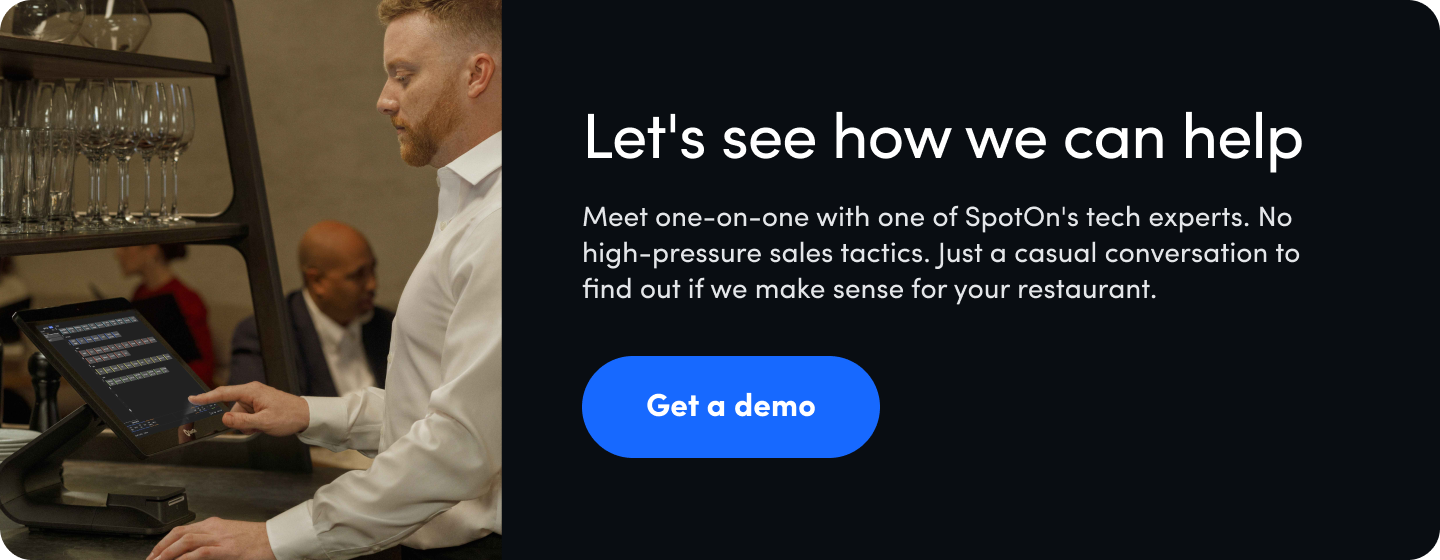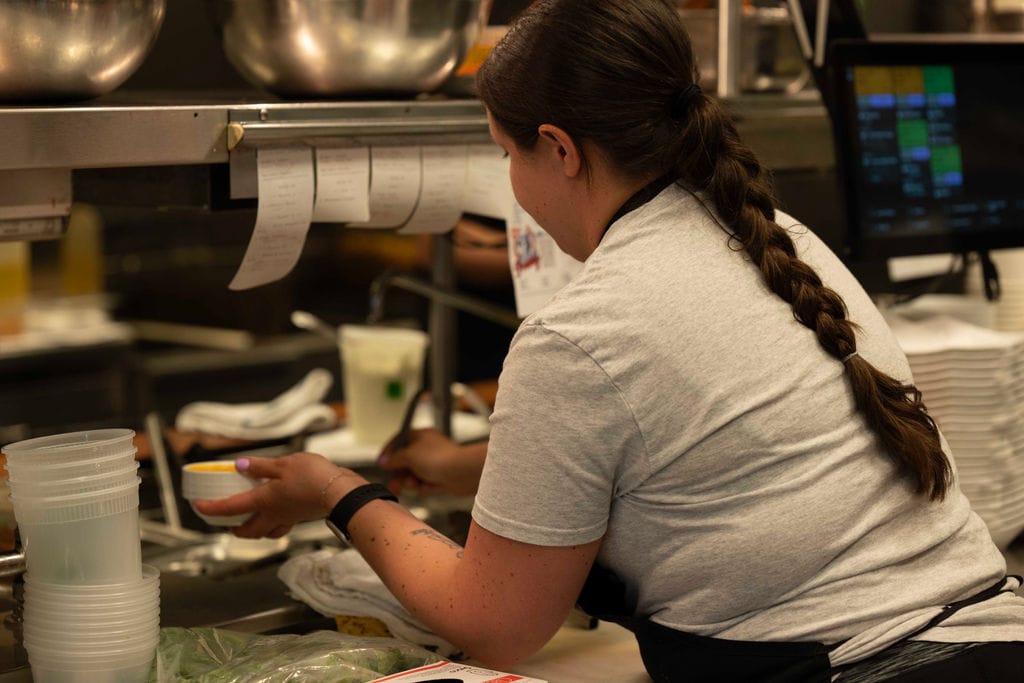All day. Dead plate. Triple sat. Mise. You may have overheard these terms coming from the restaurant kitchens, both real and fictional. Popular movies and TV shows have started bringing kitchen slang into the mainstream. "Yes, chef" isn't just for the chef de partie anymore.
Every industry has its own jargon, and the hospitality industry is no different. Here's a comprehensive guide to understanding restaurant terms, from the back-of-house line cooks to the front-of-house wait staff.
2-top, 4-top, 8-top...
This refers to how many guests are in a party or table size (how many guests can sit at a table).
Example: "I seated the couple at our last available 2-top."
5 out
A term used in both the back-of-house and front-of-house to mean an order ticket or table is 5 minutes away from needing attention.
Example: "Table 4 is 5 out, let's make sure their drinks are refilled before they get their food."
86
This means the menu item or ingredient is no longer available. The kitchen has run out of this particular menu item. It is both a verb and an adjective, meaning an item is marked as unavailable on the restaurant point-of-sale system.
Example: "86 ahi tuna tostadas. The kitchen just ran out of ahi tuna."
All day
What does "all day" mean in a kitchen? "All day" is the total quantity of a particular menu item that needs to be prepared at that moment. It can also refer to what the server needs from a particular station.
Example: "I need 6 pumpkin ravioli all day." or "Fry station all day?"
À la carte
This refers to a menu where each item is priced individually, so guests can choose an appetizer, main item, side dish, and dessert rather than a pre-set number of courses (this would be a prix-fixe menu style).
Example: "The menu is à la carte, you can choose from a selection of appetizers and main courses."
Back-of-house
The back-of-house, or BOH, refers to kitchen and all the restaurant operations guests cannot see. It can also include the cleaning and back-office work.
Example: "The back-of-house staff is slammed with prep work before tonight's dinner service."
Barback
A barback supports the bartender with pre-shift duties, restocking, and helping guests if the bar is slammed. While they might not necessarily be making drinks, the barback plays a crucial role making sure the bar is clean and fully stocked.
Example: "The barback just ran downstairs to restock the Aperol bottles and refill the ice."
Behind
This means "don't move" or "don't step back." It is a call-out that helps prevent accidents on the line. A cook calls out "behind" (or sometimes "behind hot" or "behind sharp") to let other cooks know where the hazard is and help keep them out of harm's way. Always said loudly and clearly.
Example: "BEHIND [with a plate of hot food walking towards the expo]"
Busser
The busser's job is to ensure guests have a clean dining experience. That means clearing empty plates and glasses from the table, refilling napkins and doing other dining room maintenance tasks, and setting the table before a new dining party arrives.
Example: "We need a busser at table 34... someone knocked over a glass of orange juice."

Campers
This is a term wait staff use to refer to guests who have outstayed their welcome at the table. They may have only ordered a few items but kept the table from waiting guests, or they may have already paid the check but are still hanging out.
Example: "We have some campers at table 8. They paid 45 minutes ago but they're not leaving the table."
Chef hands/fingers
You don't get to be a head chef without burning a few fingers. This term refers to the lack of sensitivity many on the cooking line experience in their hands after years of hard work.
Example: "I don't need a kitchen towel to move this pan... I have chef hands."
Clopen
Two shifts back-to-back, both the closing and the opening shift. It could mean closing on a Friday night and coming back in for the Saturday morning brunch shift. Also referred to as "clopening."
Example: "Ugh, we're short-staffed this weekend so I'm working a clopen."
Comped
When an item or meal is "comped," it's free. It's short for "complimentary." A comped item might be a drink, appetizer, side of sauce, or free meal. It can also be used to make up for an error or a late dish on the restaurant's part.
Example: "Table 10 gets VIP treatment, dessert is comped."
Corner
Similar to "behind," staff say "corner" to alert servers and fellow staff members that you're coming around a blind corner of the restaurant.
Example: "CORNER! [turns a blind corner with a tray of clean glasses]."
Cover
A cover is is a success metric restaurants use to track how many guests they have served. A cover can be either a guest's serving or the guest's seat. Restaurants aim for a number of covers per night to break even.
Example: "We're averaging 150 covers per night and need to increase our food orders to keep up."
Cut
When you're "cut" as front-of-house staff, you no longer get assigned new tables. This could mean it's time to accomplish your sidework or you're heading home early.
Example: "It's a slow night... I'm going to have to cut at least two servers."
Dead plate
A dead plate is an order left behind under the heat lamps or in the expo window. The server either forgot about the order or refired the order ticket.
Example: "Since we got the new kitchen display system, we don't have dead plates stuck in the window."
Deuce
A deuce is a 2-top table, sometimes unpreferable to servers as they're less profitable than larger tables.
Example: "We have a deuce and then a party of three waiting outside the restaurant."
Dishie
A dishie is kitchen slang for a dishwasher. Dishwashers primarily work on clearing and washing plates, utensils, and glassware to ensure the kitchen and bar are fully stocked.
Example: "The dishie is doing great work, these plates are sparkling."
Double-sat
This refers to when a host seats parties back-to-back in one server's section. It's a challenge for the server to greet, take orders, and deliver food at the same time.
Example: "I need a food runner to bring out the entrees. I'm double-sat."
Double shift/Double
A double shift means working two shifts in a row on the same day.
Example: "I'm exhausted from working a double, but I made great tips."
Dying
"Dying" refers to food that's been sitting in the window (the kitchen window, not the actual window) for too long and has either gone cold or is no longer fit to reach the guest's table.
Example: "That eggs benedict is dying in the window; the hollandaise has congealed."
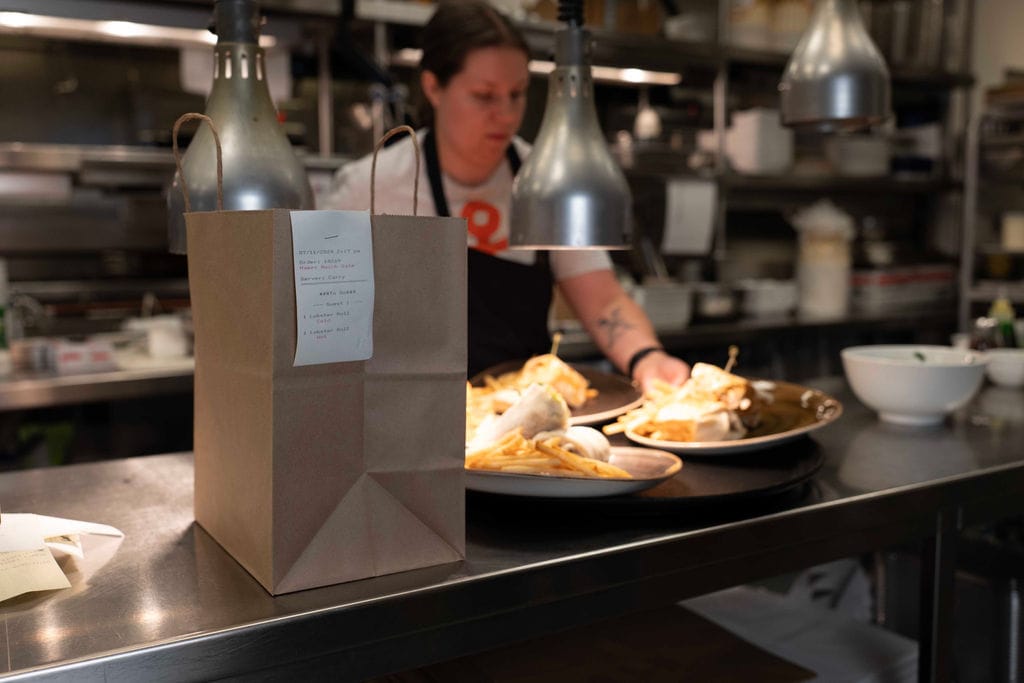
Expo
Short for "expeditor." This either refers to the person or the window that serves as the last stop before orders reach the guest's table. The expo ensures a food runner delivers the food order and that the restaurant runs smoothly. Sometimes, the expo and the food runner are the same person.
Example: "There's a Caesar salad for table 2 on the expo window."
Family meal
Restaurant lingo for a meal shared by the staff pre-shift. Often cooked by a rotating staff member, this meal is free of charge and considered a perk of the job. It's served family-style and shared by all employees, from the dishie to the chef de cuisine.
Example: "Remember to come in early for the family meal, or the mashed potatoes will get cold."
Fast casual
A fast casual restaurant doesn't offer full table service, but serves food that is higher quality than fast-food restaurants. This could mean less frozen or processed foods.
Example: "There's no line at the Mediterranean fast casual restaurant, should we go there for lunch?"
FIFO
First in, first out. You might see this term posted in the walk-in refrigerator. It means using the food towards the end of its shelf life first and saving the fresher items for later.
Example: "Someone forgot to FIFO the onion rings, and now they're going moldy in the walk-in."
Fire
Restaurant slang for "it's time to start cooking a dish." When a server enters a food order in the point-of-sale system or handheld POS, they fire a dish. Similarly, when a sous chef tells a line cook to fire a dish, they're saying they need to start preparing the dish.
Example: "Fire French onion soup! Table 6."
FNG
FNG is playful restaurant slang that refers to the new hire. It stands for "freakin' new guy" (that's the family-friendly version).
Example: "The FNG is still learning the menu items, he just started yesterday."
Food runner
A food runner's primary role is to bring food from the expo window to the guest's table. They play a crucial role for servers assigned to more than one table at a time, helping run food and direct guest requests to the server.
Example: "We'll need 2 food runners on Mother's Day. We're going to get slammed."
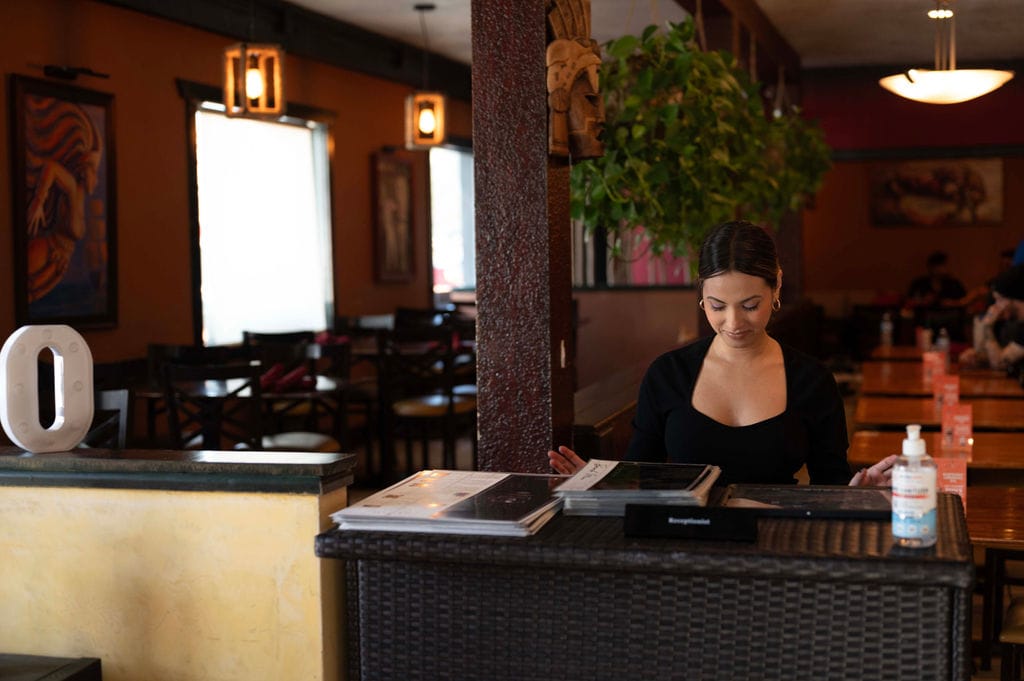
Front-of-house
The part of a restaurant that includes the host stand and the dining room. The front-of-house refers to customer-facing employees: the host, servers, and potentially bartenders.
Example: "The new front-of-house staff member starts on Tuesday. She'll be serving and bartending in a pinch."
Hands
"Hands" is restaurant slang for "someone bring food to tables." When a chef calls for hands, they need a food runner (or more than one, if it's a large order) to bring the finished plates to the table.
Example: "The tomato cobbler is plated. I need hands."
Handhelds
Not sandwiches, usually. It's restaurant lingo for handheld pos system, a small device or tablet that servers use to send orders to the kitchen while remaining on the floor with guests.
Example: "My tips have increased 7% using handhelds because I get to spend more time with my tables."
Heard
"Heard" is a response to requests from the kitchen (and dining room). It's a fast-paced environment, and it's essential to let people know that you've heard their request and you're acting on it.
Example: "86 carpaccio." "Heard, chef."
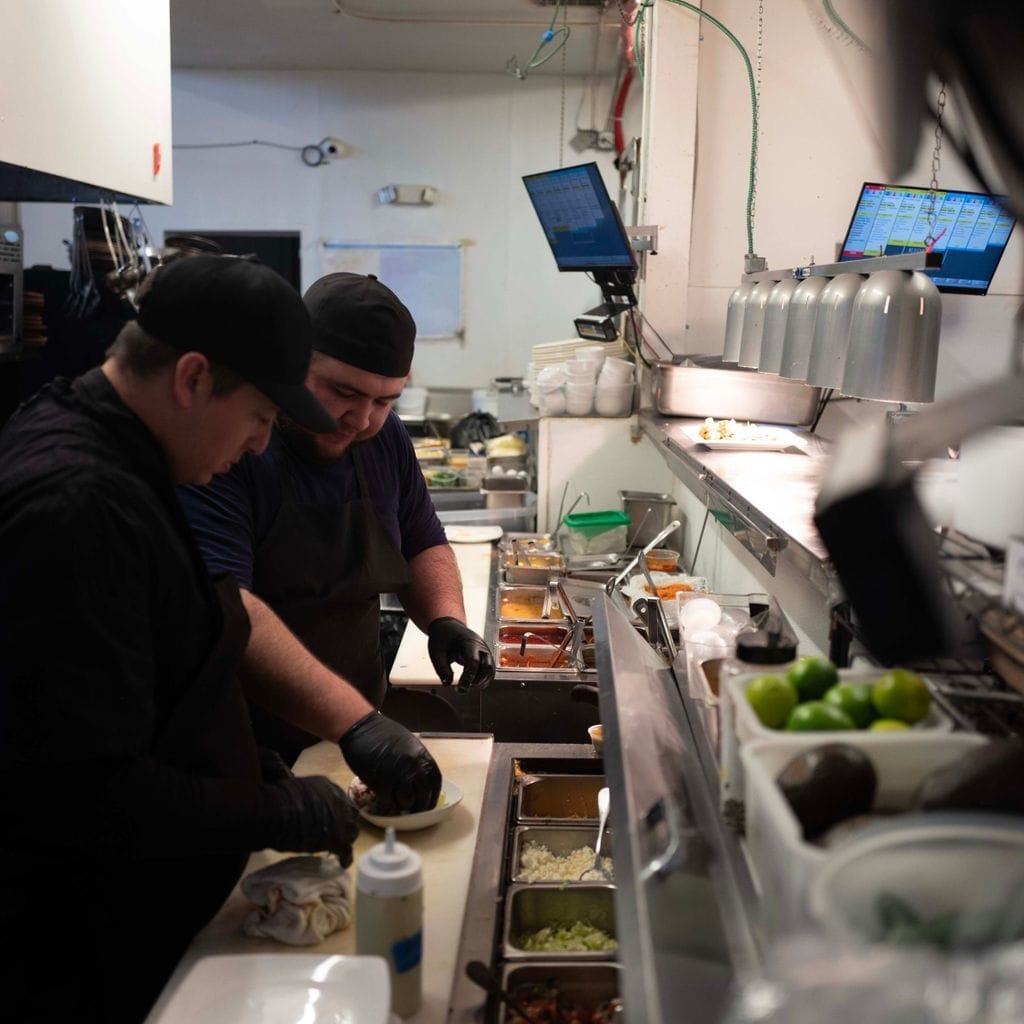
Hero cook
The opposite of a bad cook. The hero cook carries the line when all the tickets come at once, accomplishing their own work and helping out everyone else as well.
Example: "Bret was a real hero cook tonight, he helped out with the fry station and kept the grill alive."
Hockey puck
Kitchen slang for a well-done hamburger or anything left on the grill for too long.
Example: "Table 10 wants one burger rare, one hockey puck."
In the weeds
Kitchen lingo for overwhelmed.
Example: "I'm in the weeds with this birthday party 8-top."
In the window
The "window" is where the food waiting to go out sits. There will be heat lamps for warm food, and an area without heat lamps for food coming out of the cold station.
Example: "That breakfast hash has been dying in the window for the past 10 minutes."
KDS
KDS is short for kitchen display system. It's the digital version of paper tickets that tells the cooks when to start preparing food for each ticket.
Example: "Start cooking food orders as they appear on the KDS."
Kill it
In professional kitchens, kill it means cook something extra well-done.
Example: "Steak frites. Kill it."
Last call
Last call means the bar or kitchen is about to close. Bartenders and servers let the dining room know that it's last call and if they want any more food or drinks, they should order now.
Example: "Table 11 wanted to order fries, but last call was 10 minutes ago."
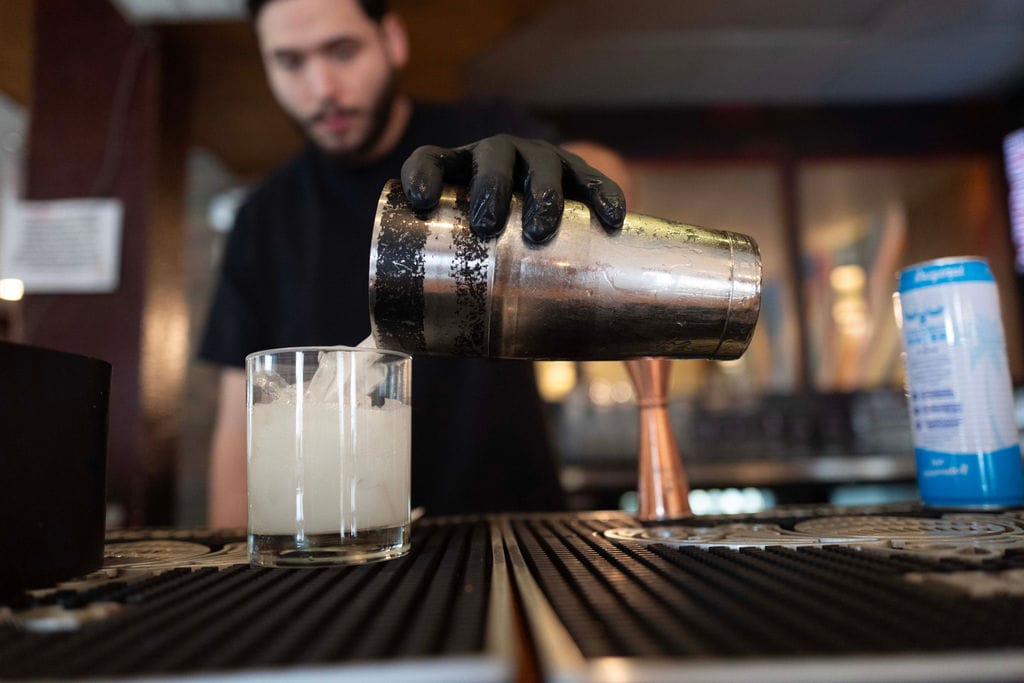
The line
The main area where cooking happens. Commonly features cutting boards and food prep containers.
Example: "Our head chef worked on the line for over a decade."
Low boy
A refrigerator or freezer under a counter, bar, or prep table in the kitchen or storage areas. They're more convenient than the walk in, and usually contain already prepared ingredients.
Example: "We can fit two or more containers of basil in the low boy."
Market price
The price of a menu item that fluctuates based on the market. This is common in more upscale restaurant concepts serving seafood and other rare, seasonal items.
Example: "The market price of lobster tonight is $49."
Mise en place
Mise en place is a French term that literally means "put in place." Sometimes shortened to "mise," it's advance prep work and neatly arranging the ingredients so that the actual cooking process goes smoothly.
Example: "I ran out of the small bowls I need for mise en place."
Misfire
Mistake on behalf of the kitchen or server, resulting in an incorrect order that can't be served to the guest.
Example: "Our misfires have decreased 20% since installing a line cook screen KDS."
Mods
Kitchen slang for "modification." This refers to the changes guests can make from the original menu item. Custom menu item mods can be programmed into a restaurant point-of-sale system to make the ordering process faster.
Example: "Table 9 got a burger with mods: pepper jack cheese, pretzel bun."
No show
When a guest makes a reservation but doesn't show up or cancel.
Example: "We have room for at least one walk in dining party tonight because of a no show."
On the fly
An order that needs to be made immediately.
Example: "We need two involtini on the fly."
Party
This term refers to a group of diners.
Example: "I'm getting swamped by large parties tonight."
Pick up
This means the order is ready to be brought to the guest. It's also used to communicate a deadline that dishes need to be ready by.
Example: "Pick up by 8:30 pm for table 8."
Plating
Plating is the last step before food reaches the window. It's the process of arranging food on a plate to make it look visually appealing.
Example: "The plating for that hamachi crudo is gorgeous. I love the edible flowers."
POS
The point-of-sale system, common throughout the restaurant industry. It's the tool for servers to place orders, restaurant managers to track reports, and the homebase for restaurant operations.
Example: "I just rang in table 6's order into the POS."
Prix fixe
A prix fixe menu is the opposite of an à la carte menu. It's a french term that indicates a set menu with a predetermined price that is popular at upscale restaurants.
Example: "The prix fixe includes a salad, main course, and dessert course."
Push it
This is a directive for the front-of-house to sell a particular menu item. It could be very profitable, or a new special, or nearing the end of its shelf life.
Example: "We need to push the Atlantic cod tonight."
Shadow
A new hire or an employee looking to take on a new role in the kitchen and dining room might shadow another employee. This means silently observing their work to learn best practices.
Example: "I'm shadowing the head chef as he develops the new menu."
Sidework
Sidework is the non-guest facing work assigned to servers during their shift. It might include refilling the salt and pepper shakers, rolling silverware, or doing other small cleaning tasks.
Example: "It's a slow shift today and the drink fridge needs restocking if you need some sidework."
Stage
Pronounced "stahhj," this is a french term referring to a trial period or unpaid internship for aspiring chefs. This is more common in the fine dining restaurant industry.
Example: "After my stage in Copenhagen, I'm hoping to work as a pastry chef."
SOS
This abbreviation means "sauce on the side."
Example: "Double cheeseburger, SOS."
Sous chef
Works directly under the head chef.
Example: "Our old sous chef left to start his own restaurant."
Stretch it
"Stretch it" is a kitchen term for making ingredients last for as long as possible.
Example: "Stretch that arugula so we don't have to 86."
Sub
Short for "substitution," meaning swapping out one food for another. Different from a mod, which is a choice that requires specification from the guest, a sub is a special guest request usually to accommodate preference or allergy.
Example: "Caesar salad sub chicken for salmon."
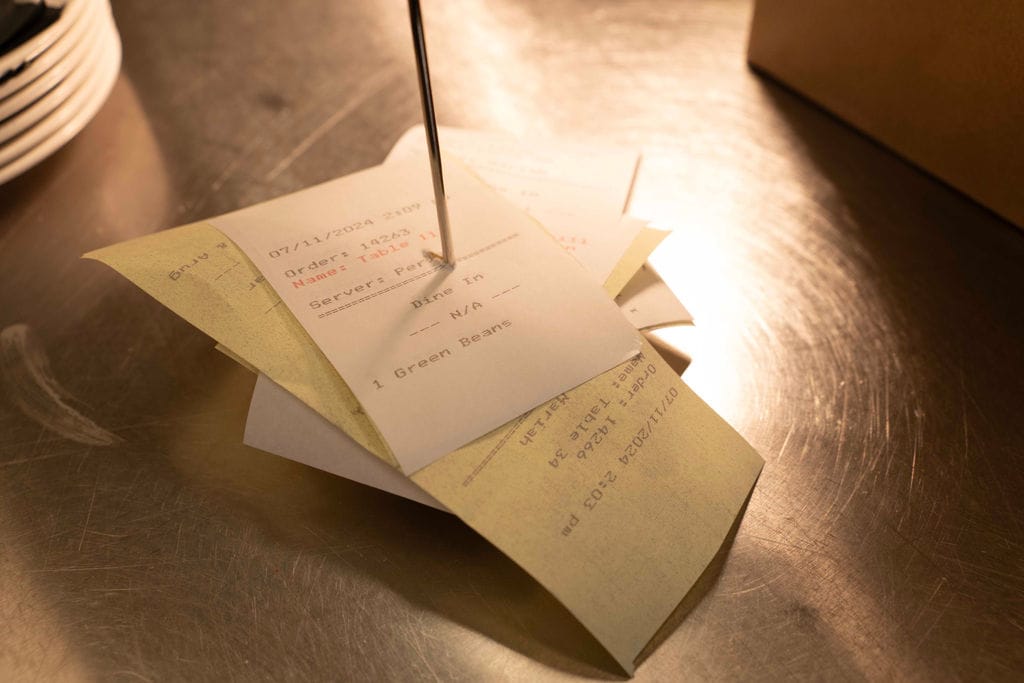
Tickets
Either paper tickets, or digital tickets on a kitchen display system. Each ticket represents an order that needs to be fulfilled by the kitchen.
Example: "A large party sat down and the kitchen got a rush of tickets all at once."
Walk in
The large walk-in refrigerator is a staple in every restaurant kitchen. It serves as cold storage for perishable ingredients.
Example: "You can find the sliced proscuitto in the walk in."
QSR
Acronym for "quick service restaurant." Typically, at these kinds of restaurants, guests order at the counter or via QR code and either pick up their food at a window or get it delivered by a food runner.
Example: "Salad QSRs are popular for the office lunch crowd."
